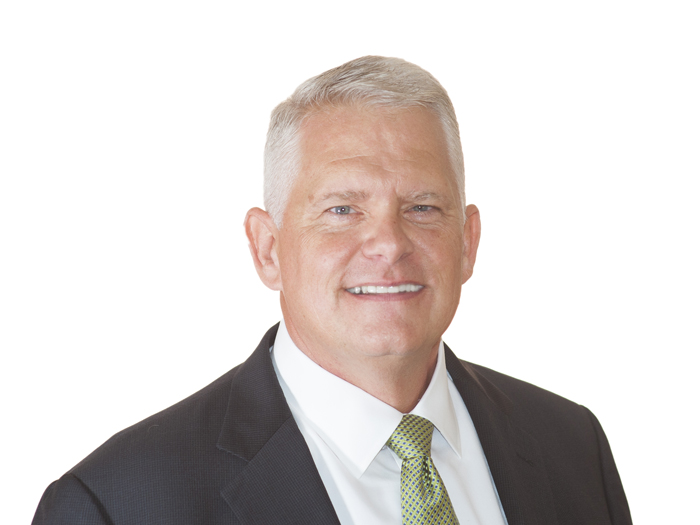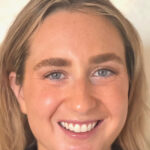12 Questions for The Hanover’s Frank Baron

Frank Baron, president, specialty property & casualty for The Hanover Insurance Group, spoke to Risk & Insurance® about market conditions and business opportunities, as well as challenges. What follows is a transcription of that conversation, edited for length and clarity.
Risk & Insurance: Tell us about yourself, Frank. What topics are top of mind for you these days?
Frank Baron: When I joined The Hanover almost five years ago, we specifically created what is now the Hanover Specialty Property & Casualty division. It was meant to be an area where, if there’s more complex property and casualty risk, they would be in our focus. We would be the group that would develop the cross-section of property and casualty. That’s within risk transfer, that’s programs, but that’s also fronting opportunities and that’s also some of the higher deductible business.
These tend to be a little bit more complex risk. So it could be boom trucks, arborists or all types of charitable organizations. It’s a broader spectrum of programs, businesses where we have delegated authority.
R&I: What business opportunities are alluring these days?
FB: I’m very excited about The Hanover and that we are very well positioned and, very specifically to my underwriting areas, to really engage with our agents and brokers to really understand and help our clients meet their complex needs, particularly as we’re seeing some competitors in the marketplace exiting certain segments and pulling back on capabilities.
We’ve been working on the last number of years to build out these capabilities. On the casualty side, we spent a lot of time working with the organization to understand what the casualty continuum is. What were we offering to the small commercial and middle markets? What are we offering in other areas of specialty? That’s where we built out our additional non-E&S capabilities.
For instance, last year we launched a special general liability capability that’s focused on working with the customers’ agents to meet their tougher product exposures, particularly in the manufacturing space. We also built out a team solely focused on retail agent distribution to complement what we were already doing with the wholesale distribution.
We launched the Specialty General Liability group last year, complementing our industrial property capability we already had available. To me, we’re very well positioned to hear from our agents on where they are having challenges in either getting capacity or capability and where we can continue to meet more of those needs in ’23 as we go forward.
R&I: What is the “casualty continuum,” then?
FB: There is a very specific body of work that we did, starting a couple years ago, to really look at the totality of our casualty offerings. That’s property and casualty, but it’s also including executive professional liability.
We started asking ourselves, “What are the offerings that are out there in the marketplace? What was The Hanover offering at the time?” Then we did an in-depth analysis working with our field colleagues to interview and get feedback from our agents about where they think we would add the most value to them, because we’re not going to be all things to all people.
We received feedback from them on whether they wanted us to be able to provide more complex solutions for them. On the property side, that’s in our rural land group, and on the casualty side, that’s in the just recently-launched liability group.
That’s also why we’ve built out the retail E&S capability so that we could use non-admitted paper, run it through our own in-house wholesaler, and partner with our retailers to meet more of their non-admitted needs.
That non-admitted marketplace has been growing. So it’s trying to understand not only where’s the market been but where’s the market going, and just continuing to try and evolve our capabilities and services to better meet the needs.
R&I: When you look at general liability and the casualty side of things, from the agent’s perspective, is that fair to say they’re trying to find that consistent relationship where somebody’s going to stick around with them a little bit?
FB: It’s a key issue for them. It’s consistency. They’re saying, “I want you to be a go-to market in consistent ways, and I want you to be able to thoughtfully increase your capabilities so that I can go to fewer carriers for deeper and broader relationships when possible. Also, if I’m having challenges with other carriers, who are some of my go-to markets that I can go to and have conversations to try and find alternative solutions?”
R&I: You mentioned opportunities and strategies. What are the challenges, though, to doing what you want to do? What you have to overcome as a group?
FB: We are facing some of the same issues that the industry is. Obviously you have the changing weather patterns. You just had these severe winter storms that just came through, on top of Ian and everything else. Also, right now you have the big storms going on out West.
So one, how do we get a better handle on risk assessment from our point of view, but also, how do we just continue and enhance and grow our risk solution, risk engineering capabilities that we can offer to our agents and customers? So as much as possible, we can work on creating mitigation and avoidance where possible or at least create more awareness, so we can mitigate the losses if and when they occur.
R&I: When thinking about mitigation and avoidance or prevention, are there places where you see technology stepping up?
FB: We’ve been working on sensors and drones for a number of years. Back in the summer of ’22, we introduced the Hanover I-on Sensor Program™, where it really focuses on helping to reduce business losses for properties, fleet telematics, workplace ergonomics and heavy equipment tracking with IoT technology solutions.
What’s been really cool to see is we’ve used those in our core specialty … in property and casualty, which is our small commercial middle market.
But we’ve also had good success in working with our programs area.
We have real-life examples of where you had commercial customers, they had a water break over the weekend and there’s a museum or art gallery on the floor below them.
Because the client got instant notice that this was happening, they were able to take immediate action, and we were able to get it repaired right away and avoided significant losses.
There’s been other examples of where there’s been other types of events that occurred at night, over the weekends, and the sensors are performing.
We’ve moved from this technology being theoretical to having actual real-life stories that we can share with other customers.
R&I: Are you doing a lot of fleet and commercial auto?
FB: We’re definitely working on fleet telematics. It’s something that we’re working with our clients to understand. Are they cars, are they light trucks, are they medium trucks, or is it more residential, more commercial?
As the technology continues to evolve, it’s getting better, but we know there can be some issues about how the information is captured and relayed.
I’ll say there’s some issues in differing states as to what information can be captured, how long it’s stored or how it’s shared. So it’s very much an evolving area. Christina Villena, who’s our VP of risk solutions, does a great job of really being that connection point for us to the external world, staying involved in what’s going on in the industry associations and trade groups, but also having those conversations with existing and potentially future vendors to understand how our client’s businesses and needs changed.
R&I: When you think about talent retention and recruitment opportunities and challenges, how do you view how your group is doing in that area?
FB: When I have conversations with my three different business unit presidents that run my groups, that’s something we’re talking about all the time.
How are we developing and helping our existing people progress in their careers and trying to help them to see there’s opportunities not only within our verticals, but there’s opportunities within the broader organization?
I think that one’s always been important.
Now more than ever, it’s a responsibility from the frontline underwriter up to the most senior people — you’ve got to keep your networks fresh as to who is a potential candidate.
It’s around trying to be proactive on what’s our pipeline and constantly having conversations to find the best candidates we can.
At times, that may be something of, relatively speaking, do you hire over in a certain role, because you know you may be looking at certain transitions? Because we know, for instance, in our risk engineering and some client groups, we’re coming into a window where there’s a group of people who could retire.
We’re mindful to have positive and proactive conversations of where are people in their careers and then focus on incorporating that into our recruiting and development patterns.
R&I: It sounds like you feel everybody needs to own this one, as opposed to just HR or business leaders. Is that correct?
FB: 100%. I’ve been in this specialty space my entire career, a long time. No matter how good HR is, our businesses are so niche driven, it is absolutely a responsibility of everybody to be continuing to maintain their relationships and their networks, because we can effectively partner with HR, but if you’re passive in a way for HR to bring you candidates, you will constantly be in the hole.
R&I: What the risks are really pressing your insureds these days?
FB: First, if you look at the property segment across its entirety, not only is it CATs, you’re also seeing increased frequency on some of the lesser weather-driven claims. You’re seeing parts of the country that never had hail claims that are now having material hail claims. The same thing with flooding.
One of the things we’re really trying to encourage our clients and agents is, let’s not wait till it’s already on the Weather Channel. Let’s be proactive in the current environment and looking at the property exposures.
Then there’s what’s going on in the liability litigation segment and also in cyber. What is the current perspective that my agents and carriers can give me on the current market and where do I potentially have gaps? Where can I be more proactive in engaging on mitigation and avoidance?
R&I: Looking back at your career, what were some big moments for you? What were some big influencers on you?
FB: I’ve been very fortunate to look back over the entirety of my career. I’ve been involved in most areas of P&C probably other than surety and trade credit. Then also earlier in my career, I had significant involvement in executive management liability. Then over different periods of my career, with the help and support of mentors along the way, I spent several years in HR. I spent a year in compliance.
I spent a couple years in project management. So I have completely left underwriting three, four times in my career building, though the intention was I would always come back to it.
I would like to think, having been in HR for a few years, worked on a lot of different global projects back when I was at AIG, I believe it gives me a broader perspective.
Now that I’m in underwriting again, I have a bit of a better understanding of what the HR colleague is dealing with. Now I can ask myself, what are our actuarial colleagues dealing with, what issues are our claims colleagues facing? Some of the projects that I worked on when I was in project management were focused on litigation claims and then also on actuarial products.
I’ve spent more time in their world and that’s what I try to share with my leadership team.
Hopefully it helps us become more effective in understanding as you have this very fluid market in an environment that’s going on around us.
We have to ask how do we increasingly get better understanding not only of what’s happened in the past, but also being able to identify better KPIs about what are the things that are coming at us and identifying what are the yellow flags before they become red flags.
R&I: Any last thoughts before we go?
FB: I think all of us need to really keep an eye on the reinsurance market, because we’ve gone through a couple of tough renewal cycles. This one seems to have really shaken out some capacity.
Not only has pricing gone up, but they’re also pulling capacity back. As you know, there’s been so many of these new facilities that were backed by private equity and other financial players that are MGA, MDU — these different players that were very heavily reliant upon reinsurance, that had a significant impact on the program space and in certain niches and financial lines and in P&C.
There could be a real shakeout coming in ’23-24 as that reinsurance capacity becomes more expensive. They want carriers to take more net, and they’re becoming more selective about who they’re going to back.
I do think there is a possibility you’re going to see more carrier consolidations, people having to exit from certain lines of business because they may be good in one space, but the reinsurers are uneasy within the different space. &










